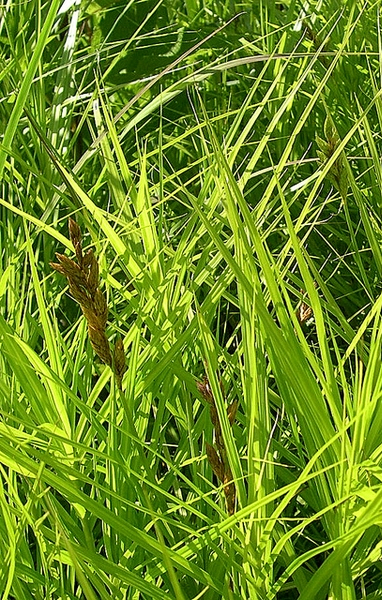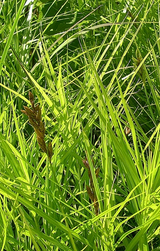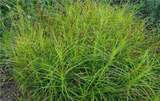- 2024 Native Trees
- >
- Grasses, Sedges, and Ferns
- >
- Muskingum Sedge (Carex muskingumensis)
Muskingum Sedge (Carex muskingumensis)
Height: 2 to 3feet
Spread: 2 to 3 feet
Type: Native Grass
Sun: Full sun to Part Shade
Bloom Time: May to September
Bloom Description: Yellow
Water: Medium to Wet
Suggested Use: Naturalize, Water Plant, Rain Garden
Attracts: Birds
Tolerate: Deer, Drought
Native to: Jefferson County
One of the hardiest native sedges found in the area.
Muskingum Sedge is a native Appalachian plant as the nme applies, being first documented in the Muskingum river basin. The Lenape, Shawnee , and Mingo people used the sedge for weaving and for trapping.
Muskingum Sedge is a dense clump forming plant. It produces eight inch long pointed grass-like leaves that are light green in color and radiate from the stem tops. The stems can grow to20 inches in height. Sometimes referred to as the Palm Sedge as the leaves slightly resemble miniature palm trees. The leaves are sharply edged as it is a sedge and sedges have edges.
Often found throughout Jefferson County and Appalachian Ohio in wooded swamps or flood plains, the Muskingum Sedge can tolerate a wide range of growing conditions. It has the potential to both self seed and grow through rhizomes.
Foliage is a nice rich green that persists throughout te spring and summer. When first hit with frost the leaves turn a vibrant yellow.
It is highly resistant to damage and browsing by deer. It is a great species for the wildlife minded as it provides year-round cover for wildlife and is a larval host plant to various butterflies and moths.■






